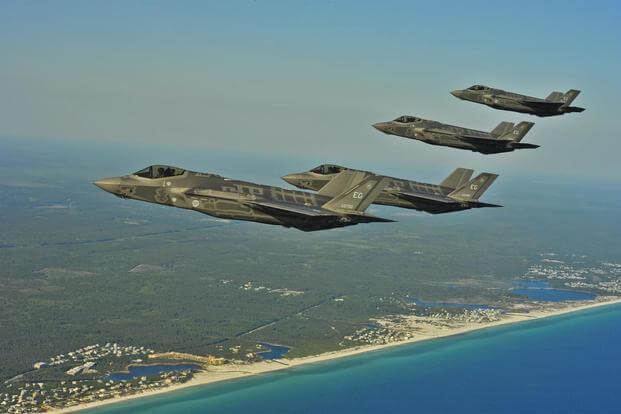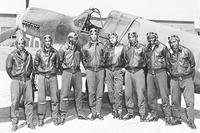EGLIN AIR FORCE BASE, Fla. -- The engineers and system developers with the Air Force's 96th Test Wing here work on a wide range of projects, from analyzing how bombs drop, to testing cruise missiles, to helping NASA in its effort to reach Mars.
Items currently on their agenda include improving the B61-12 nuclear gravity bomb precision tail kit; using cameras to map how warheads explode; developing drone swarming; testing hypersonics; improving Advanced Medium-Range Air-to-Air Missile anti-jamming electronics; and developing advanced weather sensors on the AC-130 gunship.
"We try to schedule a good balance here on all of the demands for the resources to try and accommodate as many customers as possible," said Steven Dietzius, technical director for the 96th's Air Force Test Center.
Military.com sat down with Dietzius during a trip accompanying Air Force Secretary Heather Wilson to the base.
Related content:
- Air Force Works on Liquid Antennas for Aircraft Adaptability
- New Pilot on Navigating F-35 Comms: 'It Is Extremely Simple'
- With Older F-35s 'On Life Support,' Wing Struggles to Train Pilots
One big project is perfecting the Air Force's common datalink for fourth-, fifth- and potentially sixth-generation platforms and aircraft. "The cyberspace test group here is very involved in their datalink work," Dietzius said.
"They're modernizing and advancing [node systems]," he said. "They're very capable in their fourth-gen node, but they're trying to further capabilities" so it extends to all platforms. "All of that ties all of these systems together."
The process, Dietzius explained, is looking at it like a "matured BACN," or the Battlefield Airborne Communication Node payload. BACN has become a lifesaver for broadcasting data to pilots flying in an increasingly contested environment, boosting their situational awareness for beyond-line-of-sight activity.
BACN, developed by Northrop Grumman, is one Air Force effort to bridge the gaps between tactical data links that normally would not be able to transmit information to one another.
Gaps exist even for the military's most advanced fighters.
For example, take the F-22 Raptor and F-35 Joint Strike Fighter. Because the F-22 was built with a datalink system that is incompatible with the F-35's Multi-Function Advanced Datalink system, or MADL, it can receive data from the Joint Strike Fighter -- as well as fourth-generation fighters -- through its legacy Link 16 system, but cannot share data in kind.
"The other thing they look at here is vulnerability testing," Dietzius said. "They look at all these systems to find out where they are potentially vulnerable from a cyber perspective and … from a multi-level security perspective."
Advancing such data sharing systems has given testers a glimpse into what "might come after fifth generation," he said.
In addition to its bombing ranges on land, the 96th tests over open water within the 123,000-square-mile Gulf Test Range.
Eglin would like to boost its open-water training ranges to keep up with testing demands, Dietzius said.
"We have far surpassed the capabilities of that airspace," he said. "On instrumentation, we're trying to add sights down all of Florida to give us [a broader] look."
The range on land is roughly 720 square miles, Dietzius said. But even with the large water range, flying weapons or aircraft a few hundred miles back and forth is not enough to give researchers the information they need to see just how it performs.
“All of these ranges are challenged to handle" fifth-gen aircraft like the F-35, he said. "By investing in the Gulf range, we're attempting to enable a much more realistic and operationally relevant environment."
The plan is to put sensors in the Gulf Test Range that will scan and read the F-35 as it flies or deploys weapons.
"We are acquiring through agreements and or partnerships with other DoD organizations locations now further down on the peninsula to put telemetry and target tracking [radars] so that we can assess what's going on in the airspace," Dietzius said.
He added, "We have the space. It's more, 'How do I instrument the space to know what's going on in that space?' You would know exactly what's going on in your system real time."
-- Oriana Pawlyk can be reached at oriana.pawlyk@military.com. Follow her on Twitter at @Oriana0214.









